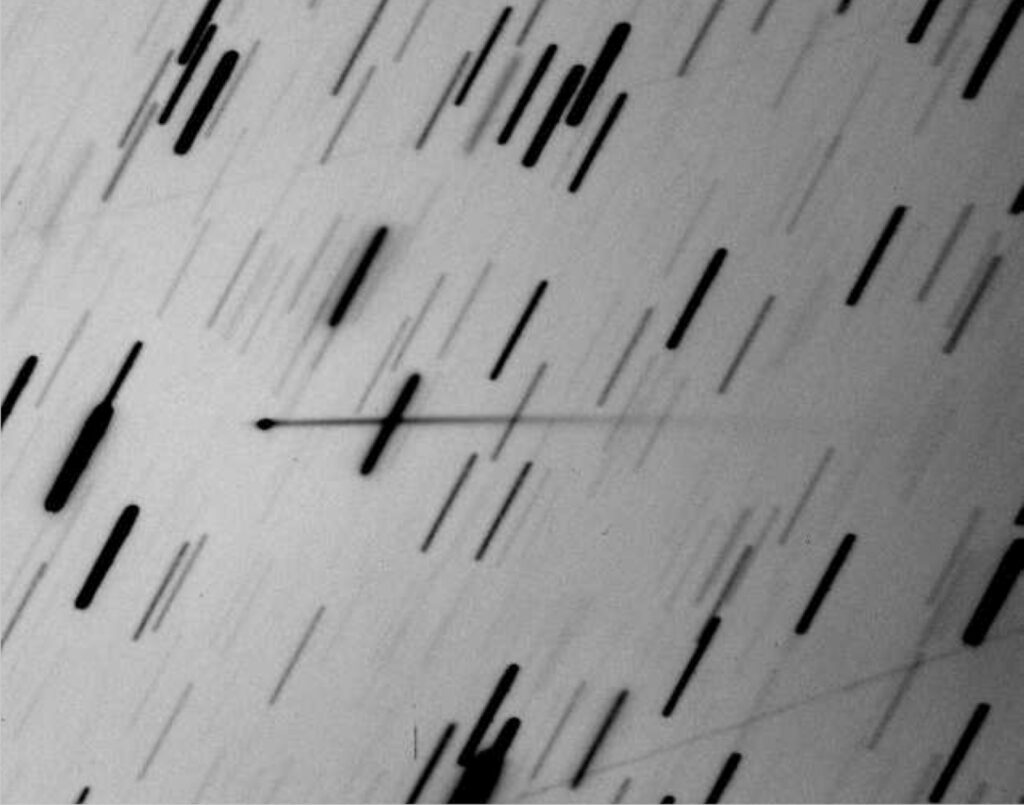Active asteroids are objects with the same orbital characteristics as an asteroid but show – at least occasionally – the morphological characteristics of a comet, namely the coma and the tail. There are currently 40 known active asteroids. These bodies were initially designated as Main-Belt Comets (MBC), but this designation implies an icy composition and existence only within the Main-Belt, while the growing population of these bodies shows which is not always the case. This is why they are called active asteroids. The causes of the activity can be heterogeneous: sublimation of volatile materials, rotational disintegration, thermal fracturing or collision with smaller asteroids. The first discovered active asteroid is 7968 Elst-Pizarro. This asteroid was discovered in 1979 but in 1996 it showed a coma and a tail and was assigned to a typical cometary designation: 133P/Elst-Pizarro.

The asteroid Gault is in full activity with its dust tail in this image taken on March 23, 2019.
On January 8, 2019, the ATLAS project dedicated to near-Earth asteroids search, found that the asteroid (6478) Gault also belongs to the group of active asteroids. Gault is an S-type asteroid belonging to the Main Asteroid Belt, located in the space between the orbits of Mars and Jupiter. It is an asteroid with an estimated diameter of about 5 km, discovered on May 12, 1988, by Caroline and Eugene Shoemaker from Mount Palomar. Gault moves on a heliocentric orbit having a semi-major axis greater than 2.30 AU, inclined by about 22° with respect to the Ecliptic plane and with a moderate eccentricity of 0.19. At perihelion, it reaches 1.86 AU from the Sun, while at aphelion it reaches 2.75 AU, so it is a body that moves in the internal part of the Main Belt. Dynamically it belongs to the Phocaea collisional family. Gault’s activity ceased in March 2019, but analyzing the photographic archives showed that the asteroid has undergone multiple activity processes. It is therefore a recurring active asteroid, albeit in an irregular way.
In OAS the asteroid Gault is the subject of intense BVR photometric studies with the “Cassini” telescope of the Loiano station to determine its rotation period and any variations over time, the phase-mag curve trend, the B-V, V-R and B-R colours and monitor the activity.
